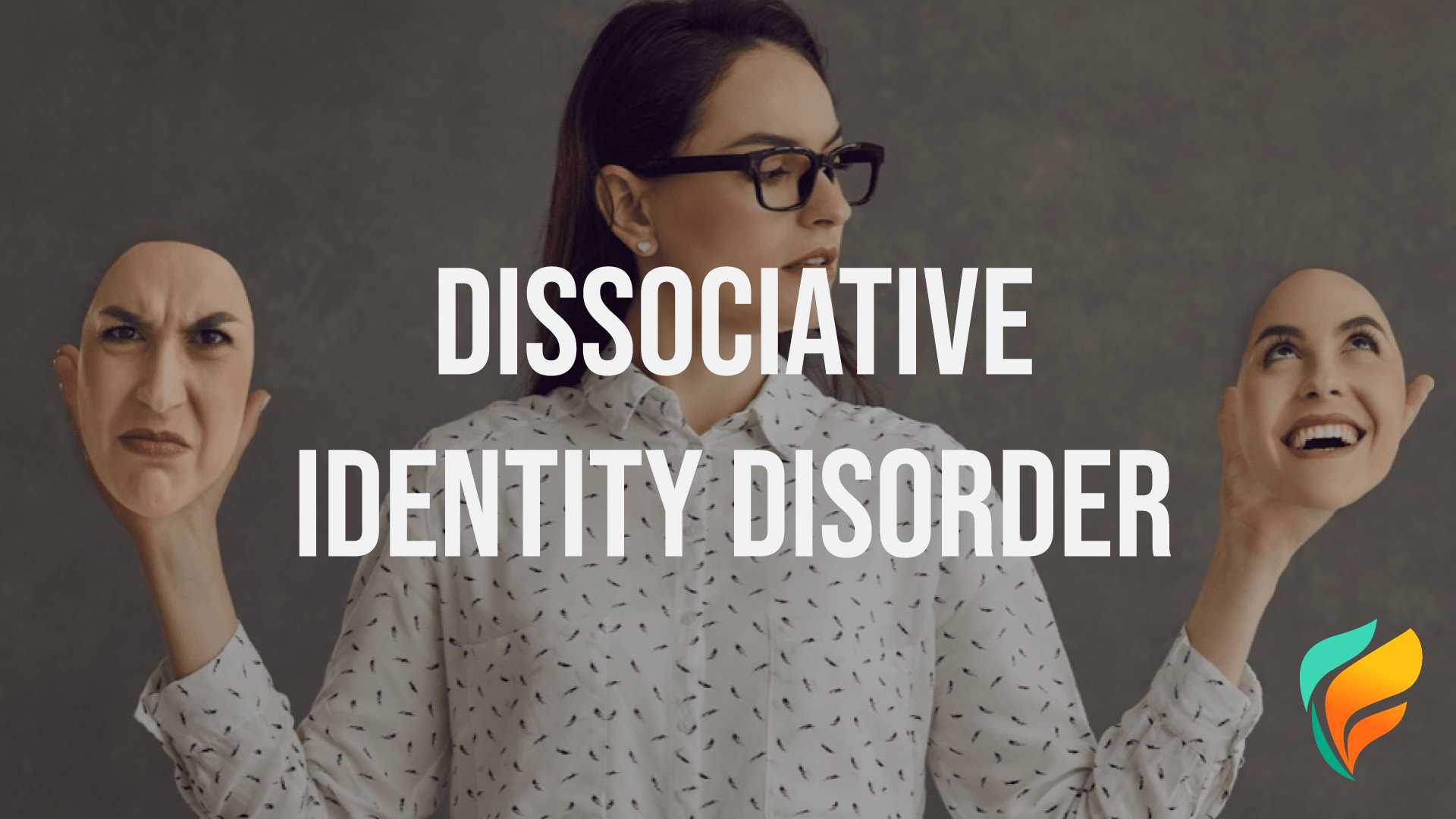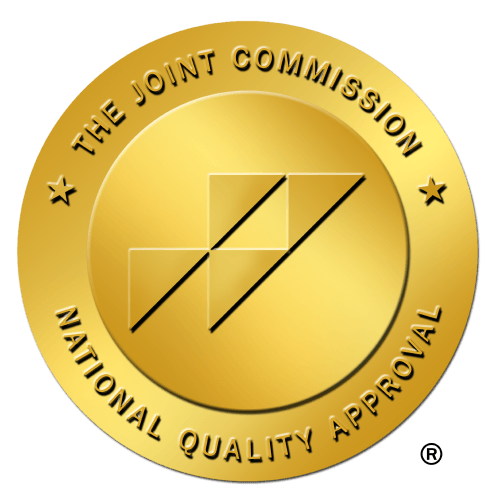Dissociative Identity Disorder: Exploring This Complex (and Treatable) Mental Disorder


Dissociative identity disorder is a serious mental condition. While sometimes frightening to see, it's also a treatable health condition. Learn more.
Dissociative Identity Disorder (DID) is a complex and often misunderstood mental health condition characterized by the presence of two or more distinct personality states. Understanding DID is crucial, especially for individuals dealing with addiction and their families.
This article explores the connection between trauma, DID, and substance abuse, providing insights into symptoms, causes, and treatment options to help those seeking a second chance at life.
What Is Dissociative Identity Disorder?
Dissociative Identity Disorder (DID), formerly known as Multiple Personality Disorder, is a mental health condition where a person experiences two or more distinct identity states or personalities.
These identities may have their own names, ages, histories, and characteristics. DID often arises as a coping mechanism in response to severe trauma, typically during childhood, allowing the person to dissociate from painful memories and experiences.
What Are Multiple Personalities?
Multiple personalities are when a person develops two or more distinct identities or personalities within themselves. These personalities can vary in age, gender, background, and even mannerisms.
People with DID may experience memory gaps, confusion about their identity, and difficulty functioning in their daily lives. Treatment for DID typically involves therapy to help integrate these different identities into one cohesive sense of self.
Common Misconceptions About DID
It's the Same as Schizophrenia: One of the most common misconceptions is that DID is the same as schizophrenia. While both are serious mental health conditions, they are distinct disorders. Schizophrenia is characterized by hallucinations and delusions, whereas DID involves multiple identities.
It's Just Attention-Seeking: Some people believe that DID is fabricated or a form of attention-seeking behavior. However, DID is a recognized mental health condition supported by clinical evidence.
People with DID Are Violent: Media portrayals often depict individuals with DID as dangerous or violent. In reality, most people with DID are not violent and are more likely to harm themselves than others.
Symptoms and Characteristics of DID
Distinct Identities: The most prominent symptom of DID is the presence of two or more distinct identities or personality states. Each identity may have its own name, age, gender, and personal history.
Amnesia: Individuals with DID often experience memory gaps, which can include forgetting personal information, daily activities, or traumatic events.
Depersonalization: A sense of detachment from oneself, feeling like an outside observer of one's body or thoughts.
Derealization: A sense of detachment from the surrounding environment, feeling as if the world around is unreal or dreamlike.
Identity Confusion: Difficulty defining or knowing one's self, feeling uncertain about who they are.
Sudden Shifts in Behavior and Mood: Rapid changes in behavior, interests, and mannerisms corresponding to different identities taking control.
Self-Harm and Suicidal Tendencies: Due to the intense psychological distress, individuals with DID may engage in self-harm or have suicidal thoughts.
Understanding these aspects of DID is crucial for those dealing with the disorder and for their loved ones. Recognizing the signs and symptoms can lead to better support and appropriate treatment.
Are People With Dissociative Identity Disorder Dangerous?
It is important to understand that individuals with Dissociative Identity Disorder (DID) are not dangerous by nature. DID is a complex mental health condition where a person's identity is fragmented into two or more distinct personality states. These different identities, also known as alters, can have unique ways of thinking, feeling, and behaving.
While there may be misconceptions and stigma surrounding DID, it is crucial to remember that those with this disorder are more likely to harm themselves than others. Although there may be misunderstandings about Dissociative Identity Disorder, it is essential to approach this condition with empathy and understanding.
By raising awareness and providing support to individuals with DID, we can help reduce stigma and promote mental health wellness for all.
What Is Mental Health Stigma?
Mental health stigma refers to the negative attitudes, beliefs, and stereotypes that surround mental illness. It can lead to discrimination, isolation, and a lack of understanding towards individuals struggling with mental health issues. Stigma often prevents people from seeking help or speaking openly about their struggles, which can worsen their condition and hinder their recovery process.
Breaking down mental health stigma is crucial in creating a supportive and accepting environment for those dealing with mental health challenges. It involves educating others, challenging misconceptions, and promoting empathy and compassion towards individuals with mental illness.
Are You Struggling with Mental Health or Addiction?
We Can Help. Call Us Now!
CALL: 877-839-1772
Causes and Risk Factors for Dissociative Identity Disorder
Like other mental disorders, dissociative identity disorder has many potential causes.
Trauma and Its Role in the Development of DID
Trauma, particularly severe and repeated experiences during early childhood, is the primary cause of Dissociative Identity Disorder (DID). Such trauma often includes physical, emotional, or sexual abuse, as well as neglect. The dissociation serves as a coping mechanism, allowing the child to escape the unbearable reality by creating alternative identities.
This fragmentation of identity helps the individual compartmentalize the trauma, which, while protective during childhood, can lead to significant challenges later in life.
Other Potential Causes
While trauma is the most significant factor, other potential causes and contributing factors include:
Genetics: There may be a genetic predisposition to dissociative disorders, meaning that some individuals are more likely to develop DID if they have a family history of mental health conditions.
Environmental Factors: Beyond direct trauma, other environmental factors such as a chaotic home environment, lack of emotional support, and unstable living conditions can contribute to the development of DID.
Attachment Issues: Early attachment disruptions, where a child does not form a secure bond with caregivers, can increase the risk of DID. A lack of stable and nurturing relationships can hinder the development of a cohesive sense of self.
Connection Between DID and Substance Abuse
There is a notable connection between DID and substance abuse. Individuals with DID often turn to drugs or alcohol as a means of self-medication, attempting to manage the overwhelming symptoms and distress associated with the disorder. Substance abuse can provide temporary relief from the emotional pain and disorientation caused by dissociation but ultimately exacerbates the underlying issues.
Coping Mechanism: For many with DID, substance abuse becomes a way to cope with the intense emotional pain and confusion brought on by their condition.
Escaping Reality: Drugs and alcohol may be used to escape the disorienting experience of switching between identities or to numb the emotional pain tied to traumatic memories.
Compounded Risks: Substance abuse can worsen the symptoms of DID, making the dissociative episodes more frequent and severe. It also complicates treatment, as addressing both the addiction and DID simultaneously requires specialized care.
Understanding the causes and risk factors of DID, including its deep connection with trauma and potential genetic and environmental influences, is crucial for effective treatment and support. Recognizing the link between DID and substance abuse highlights the importance of integrated care approaches to address both issues comprehensively.
The Link Between DID and Substance Abuse
Dissociative identity disorder has something else in common with other mental disorders. It has a link with substance abuse.
How Dissociative Identity Disorder Can Lead to Substance Abuse
Dissociative Identity Disorder (DID) and substance abuse are often interlinked, with DID frequently leading individuals to substance use as a coping mechanism. Here’s how:
Self-Medication: Individuals with DID may use drugs or alcohol to numb emotional pain, alleviate symptoms of anxiety and depression, or manage the overwhelming experience of switching between identities.
Escape from Reality: The distressing symptoms of DID, such as memory gaps, identity confusion, and dissociative episodes, can drive individuals to seek an escape through substance use.
Trauma Coping: Since DID often stems from severe trauma, substance abuse can emerge as a way to cope with unresolved traumatic memories and the intense emotions associated with them.
The Cycle of Trauma, DID, and Addiction
The relationship between trauma, DID, and substance abuse can create a vicious cycle, making recovery more challenging. Understanding this cycle is crucial for effective treatment:
Trauma: The cycle often begins with significant trauma, usually in early childhood. This trauma is the root cause of DID, as the mind creates multiple identities to shield the individual from unbearable experiences.
Development of DID: To cope with the trauma, the individual develops DID, resulting in multiple distinct identities that help manage the overwhelming stress and memories.
Substance Abuse as Coping: Faced with the distress and disorientation of living with multiple identities, individuals may turn to substances as a form of self-medication, attempting to soothe the psychological pain and chaos.
Worsening Symptoms: Substance abuse can exacerbate the symptoms of DID, leading to more frequent and severe dissociative episodes. This, in turn, increases the individual's reliance on substances to cope, further entrenching the addiction.
Reinforcement of Trauma: The lifestyle and consequences of substance abuse can create new traumatic experiences, reinforcing the need for dissociation and perpetuating the cycle of trauma, DID, and addiction.
Breaking the Cycle
Breaking this cycle requires an integrated treatment approach that addresses both DID and substance abuse simultaneously. Comprehensive care that includes trauma-focused therapy, substance abuse counseling, and support networks is essential for helping individuals achieve lasting recovery.
By understanding the intricate link between DID and substance abuse, individuals and their support systems can take informed steps toward healing and reclaiming their lives.
Are You Struggling with Mental Health or Addiction?
We Can Help. Call Us Now!
CALL: 877-839-1772
Treatment Approaches for Dissociative Identity Disorder
Treating Dissociative Identity Disorder (DID) involves a multi-faceted approach that combines various therapeutic techniques and, in some cases, medication. Here are the primary treatment options:
Psychotherapy: Also known as talk therapy, this is the most common and effective treatment for DID. Various forms of psychotherapy are used, including:
Cognitive Behavioral Therapy (CBT): Helps individuals understand and change their thought patterns and behaviors.
Dialectical Behavior Therapy (DBT): Focuses on teaching coping skills to manage emotions and reduce self-destructive behaviors.
Trauma-Focused Therapy: Addresses the underlying trauma that contributes to DID, helping individuals process and integrate traumatic memories.
Medication: While there is no specific medication for DID, certain medications can help manage co-occurring symptoms such as depression, anxiety, and mood swings. Antidepressants, anti-anxiety medications, and antipsychotic drugs are sometimes prescribed.
Creative Therapies: Art, music, and drama therapy can help individuals express and process their emotions in non-verbal ways, providing additional avenues for healing.
Hypnotherapy: In some cases, hypnotherapy is used to access and integrate traumatic memories, though it should be approached with caution and conducted by trained professionals.
The Role of Comprehensive Care in Treating DID and Co-Occurring Substance Abuse
Comprehensive care is essential in treating DID, especially when there is co-occurring substance abuse. This approach ensures that all aspects of an individual's mental health and addiction are addressed simultaneously. Key components of comprehensive care include:
Integrated Treatment Plans: Combining mental health and addiction treatment into a cohesive plan ensures that both conditions are addressed. This may involve collaboration between therapists, addiction specialists, and medical professionals.
Holistic Approach: Incorporating physical, emotional, and social aspects of care helps individuals achieve overall wellness. This can include exercise programs, nutritional counseling, and support groups.
Support Systems: Engaging family members and close friends in the treatment process can provide a strong support network, crucial for long-term recovery.
Importance of Personalized Treatment Plans
Each individual's experience with DID and substance abuse is unique, necessitating personalized treatment plans tailored to their specific needs. Personalized treatment plans are important because:
Individual Differences: People with DID may have different triggers, trauma histories, and coping mechanisms. Personalized plans address these unique factors.
Flexible Approaches: Treatment plans should be adaptable to changes in the individual's condition, progress, and emerging needs.
Targeted Interventions: By focusing on specific issues and strengths of the individual, treatment can be more effective and meaningful.
At The Forge Recovery Center, we understand the importance of comprehensive and personalized care. Our team of dedicated professionals works closely with each individual to create a treatment plan that addresses both DID and substance abuse, providing the support needed for a path to recovery and a hopeful future.
Conclusion: Finding Hope and Healing
Understanding Dissociative Identity Disorder (DID) is essential for those affected by this complex condition and their loved ones. Recognizing the symptoms, causes, and the link between DID and substance abuse is the first step towards recovery.
At The Forge Recovery Center, we offer comprehensive and personalized care to help individuals navigate the challenges of DID and addiction. Our dedicated team is here to provide the support and treatment needed to reclaim your life.
Reach out to us today to begin your journey towards hope and healing.
Are You Struggling with Mental Health or Addiction?
We Can Help. Call Us Now!
CALL: 877-839-1772





